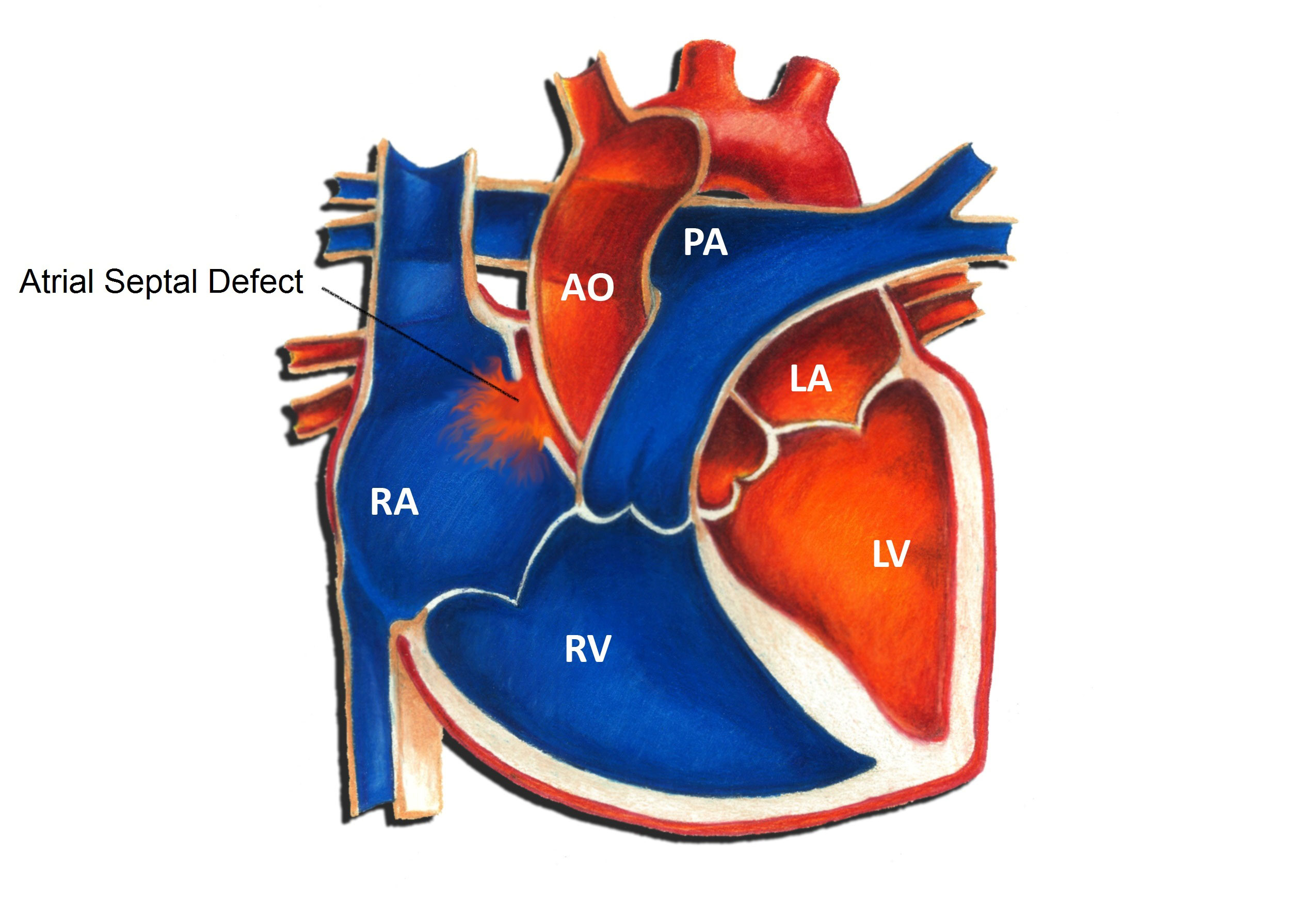At this time, the recommendation of the physicians at Pediatric Heart Specialists is that all children, including those with congenital heart disease, receive the COVID 19 vaccination, if eligible by age.


An atrial septal defect (ASD) is a hole in the atrial septum, the upper wall of the heart separating the right and left atria. Surgery is occasionally necessary to close an ASD. This most commonly occurs in the setting of a large or moderate size defect. The most common indication for surgery is the presence of dilation of heart chambers, specifically the right ventricle, due to long-standing excess blood flow. Typically surgery is performed between 2 and 5 years of age, although it can easily be accomplished earlier if necessary.
The first successful surgery to close an ASD was performed in 1952 by John Lewis and associates at the University of Minnesota. Since that time, surgical techniques and progress have improved tremendously. In this day and age, surgical closure of an ASD is generally considered a safe operation.
Because the hole created by an ASD is inside the heart, the heart must be drained of blood prior to any operation or manipulation. This requires the use of cardiopulmonary bypass. Cardiopulmonary bypass refers to the technique by which blood is diverted from the heart and lungs by a machine that subsequently removes carbon dioxide and supplies oxygen. Oxygenated blood is returned from the machine to the aorta. With the heart empty of blood, the surgeon is then able to safely open it, find the hole, and patch it closed.
Typically the patch used to close an ASD is made from a piece of pericardium, the sac which normally covers the heart. This avoid the use of any synthetic or foreign material. The surgeon uses suture material to stitch the pericardial patch into place. In some instances the surgeon is able to close the hole without a patch by simply drawing the edges together. Usually closing an ASD is relatively straightforward. Once the patch is sutured into place and the hole is closed, the patient is removed from cardiopulmonary bypass. Blood returns to the heart and the operation is complete at this point.
Fortunately over time the natural tissue of the heart grows over the ASD patch and seals it into place. Usually this process takes about 6-12 months. Because of this, the patch never has to be replaced or removed as a patient grows. Once an ASD is closed, it is typically closed for good!
All patients who undergo heart surgery are required to take antibiotics before any dental or surgical procedures for at least 6 months following surgery. The manipulation of the heart and the presence of suture material in the heart increases the risk of infection at any time bacteria may enter the bloodstream. This can happen with dental work and certain forms of surgery. After 6 months, usually the normal heart tissue has sealed things in place sufficiently to no longer require this.
The vast majority of patients who undergo ASD surgery do very well long-term. For most this is the only surgery they will ever require! Most patients are able to return to full activity within several weeks. The long-term prognosis for a patient who has had an ASD closed surgically is excellent.

